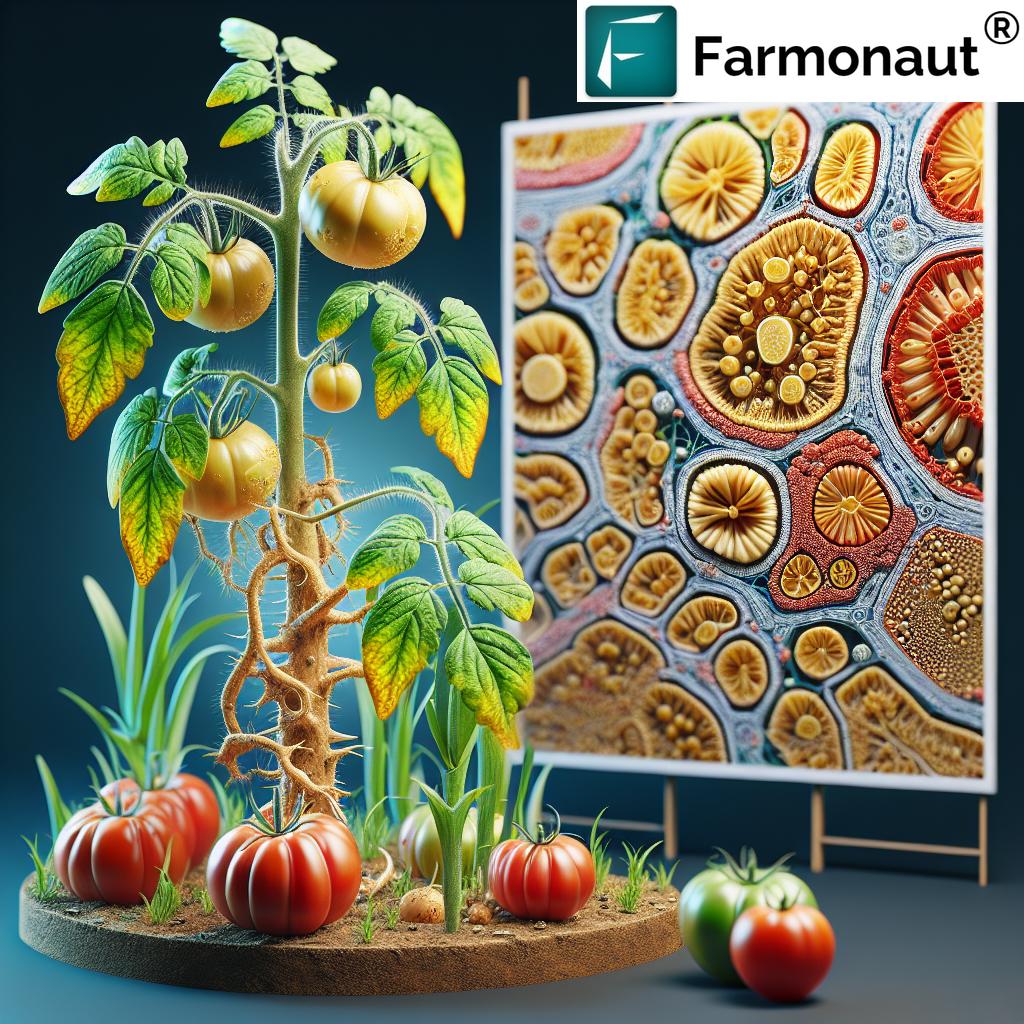Top 6 New Sustainable Agriculture Farming Practices 2025
“By 2025, precision irrigation can reduce farm water use by up to 30% compared to traditional methods.”
Summary: Sustainable Agriculture Practices — Paving the Way for Resilient Farming in 2025
As the global population continues to grow and climate change intensifies, adopting new sustainable agriculture practices is not just an option; it is an imperative to safeguard food security, conserve resources, and support rural livelihoods. Sustainable agriculture is now a fundamental approach—not a niche concept—balancing environmental, economic, and social health. In this article, we explore the top 6 new sustainable agriculture farming practices for 2025, revealing how advances in soil health, water use, biodiversity, digital technologies, and more are defining the future of resilient farming.
Understanding Sustainable Agriculture: The Foundation for 2025 and Beyond
Sustainable agriculture refers to farming and food production methods that meet current needs without compromising the ability of future generations to meet theirs. Unlike conventional agriculture, which often relies on intensive monocultures and heavy chemical inputs, the practice of sustainable agriculture emphasizes environmental stewardship, resource efficiency, and social and economic equity.
- The main goal is to balance productivity with natural resource conservation and climate resilience.
- It integrates innovative methods that minimize environmental impact, increase economic profitability, and foster healthy rural communities.
- Technologies like digital monitoring, real-time analytics, and renewable energy are transforming farming sustainable practices for the modern era.
With 2025 shaping up as a decisive year, agricultural systems worldwide are being redefined by these innovative sustainable farming practices.
Comparison Table of Sustainable Agriculture Farming Practices 2025
| Practice Name | Estimated Adoption Rate by 2025 (%) | Main Environmental Benefit | Improvement in Soil Health (Est. %) | Water Use Efficiency (Est. % Saved) | Required Digital Tools/Tech | Sustainability Impact Score (1–10) |
|---|---|---|---|---|---|---|
| Soil Health Management | 68% | Boosts fertility and reduces erosion | +15% | 5% (via improved structure/retention) | Soil sensors, microbial assays, satellite | 9 |
| Water Use Efficiency | 60% | Reduces waste, conserves water | +5% | 30% | Moisture sensors, satellite, weather stations | 9 |
| Integrated Pest Management (IPM) | 54% | Minimizes chemical use | +8% | 2% | Scouting apps, pest traps, field analytics | 8 |
| Agroforestry & Biodiversity | 47% | Enhances biodiversity, resilience | +11% | 5% | Satellite mapping, biodiversity monitoring | 9 |
| Renewable Energy Integration | 38% | Reduces emissions & costs | 0% | 15% | Solar/wind hardware, energy meters | 8 |
| Digital Agriculture & Data-Driven Decisions | 66% | Optimizes all resources | +7% | 8% | Satellites, drones, apps, AI, cloud | 10 |
“Cover cropping increases soil organic matter by 15% within three years, boosting sustainability in modern agriculture.”
1. Soil Health Management — The Foundation of Sustainable Agriculture Farming Practices
Soil health management stands at the core of new sustainable agriculture practices for 2025, laying the foundation for productive and resilient farming. Healthy soils increase yields, reduce the need for synthetic fertilizers, and buffer crops against climate extremes.
Key Principles of Soil Health Management
- Crop Rotation: Alternating crops in a sequence to disrupt pest cycles, manage soil-borne diseases, and enhance nutrient cycling.
- Cover Cropping: Growing non-cash crops during off-seasons to protect soil from erosion, suppress weeds, and enhance organic matter content. This approach helps soil retain vital nutrients and moisture.
- Reduced Tillage: Minimizing soil disturbance preserves soil structure, reduces erosion, and fosters beneficial microbial activity.
- Organic Amendments: Application of compost, manure, and green manure to improve soil structure and fertility with natural inputs.
Advances in soil microbiome research have introduced biofertilizers and microbial inoculants, naturally boosting soil nutrient availability and plant health for sustainable agriculture.
By 2025, satellite-based platforms (such as Farmonaut) are enabling real-time monitoring of soil moisture, organic matter levels, and crop health from field to field. We empower farmers with accessible, affordable AI-driven analytics to manage fields more precisely, reducing overuse of fertilizers and improving yield quality.
Explore Farmonaut’s Carbon Footprinting Solution – optimize your farm’s carbon balance and demonstrate sustainable practices to stakeholders.
Benefits of Focusing on Soil Health:
- Boosts farm productivity and resilience
- Reduces dependency on synthetic chemicals
- Improves water retention, lowering irrigation needs
- Enhances ecosystem biodiversity
- Prevents erosion and nutrient loss
2. Water Use Efficiency — Optimizing Irrigation Systems for Sustainability in 2025
With water scarcity posing significant challenges amidst climate change and growing population, efficient water management is a priority for farming sustainable practices in 2025. Modern technologies are revolutionizing the way water is sourced, distributed, and conserved on farms.
Innovative Techniques for Water Use Efficiency
- Precision Irrigation: Drip and sprinkler systems, combined with weather data and soil moisture sensors, deliver water exactly when and where it’s needed, reducing waste by up to 30%.
- Rainwater Harvesting: Storing rainwater for later use boosts farm resilience during dry spells and reduces groundwater depletion.
- Treated Wastewater Reuse: Safe, monitored use of recycled water supplements traditional sources, especially in arid and water-stressed regions.
Satellite and AI-based solutions allow for field-by-field monitoring of evaporation rates, leaks, and drought risk. Farmonaut delivers customizable advisory via Jeevn AI for weather forecasts and optimal irrigation schedules.
We enable farmers and agricultural managers to make informed decisions, shifting from blanket irrigation to targeted, on-demand watering patterns. Efficient water use is also enhanced through the Farmonaut Large-Scale Farm Management Platform, which integrates irrigation management with resource analytics for scalable, resilient farm operations.
Benefits of Improved Water Use:
- Reduces operational costs and environmental impact
- Improves crop quality and yield stability
- Supports long-term farm viability amidst climate uncertainty
- Enables sustainable agriculture even in water-limited areas
3. Integrated Pest Management (IPM) — Minimizing Chemical Inputs for Better Crop and Environmental Health
Integrated Pest Management or IPM is a comprehensive, environmental and economic sustainable agriculture practice that merges multiple pest-control strategies, aiming to reduce dependency on synthetic chemicals and minimize ecological harm.
Key IPM Techniques in 2025
- Crop Diversification: Planting multiple crop varieties interrupts pest life cycles and reduces outbreaks.
- Pest-Resistant Varieties: Selecting crops bred for natural pest tolerance.
- Biological Controls: Leveraging natural predators and biopesticides to target pests without harming beneficial species or soil health.
- Mechanical and Cultural Controls: Employing traps, barriers, and crop sanitation techniques.
- Targeted Chemical Applications: When absolutely necessary, using limited, precise doses of eco-friendly pesticides.
Digital scouting tools, fleet management solutions, and geo-tagged pest mapping offered by platforms like Farmonaut support farmers in efficient pest-monitoring, reducing over-application and tracking pest pressure trends over time.
Adoption of IPM as a key sustainable agriculture farming practice results in improved crop yields, healthier soils, protection of pollinators, and reduced pesticide residues in food. This is essential for meeting stringent global sustainability standards in 2025 and beyond.
Benefits of IPM in Modern Agriculture:
- Minimizes environmental contamination and preserves farm ecosystems
- Reduces exposure of farmers and consumers to harmful chemicals
- Enhances soil biodiversity and ecosystem services
- Maintains global food security by preventing pesticide resistance
4. Agroforestry and Biodiversity Conservation — Integrating Nature for Sustainable Food Systems
Agroforestry is a new cornerstone sustainable agriculture farming practice for 2025, involving the strategic integration of trees, shrubs, and grasses within croplands and pasture systems. This approach enhances farm biodiversity, stabilizes soils, and increases climate resilience.
Popular Agroforestry Models:
- Alley Cropping: Rows of trees are planted alongside crops to provide windbreaks, improve soil microclimate, and reduce erosion.
- Silvopasture: Integrates trees with livestock pasture, offering shelter, fodder, and diversified incomes.
- Forest Farming: Produces specialty crops—such as medicinal plants or mushrooms—beneath a forest canopy.
Agroforestry’s layered vegetation structure enhances ecosystem biodiversity, attracts pollinators, and supports natural pest predators. Smart agriculture platforms using remote sensing and AI—like those we offer at Farmonaut—monitor vegetative cover and habitat quality over time, allowing farmers to balance production and biodiversity.
Farmonaut’s blockchain-based traceability solutions (see product traceability page) bring transparency to forestry products and specialty food supply chains, supporting conservation goals and market trust in sustainable agro-produce.
Benefits of Agroforestry and Biodiversity Conservation:
- Promotes soil fertility and structure through leaf litter and root systems
- Increases crop and livestock productivity by improving local microclimates
- Boosts farm resilience to pests, weather, and market volatility
- Carbon sequestration helps mitigate climate change
- Protects watershed and reduces runoff pollution
5. Renewable Energy Integration — Powering Modern Sustainable Agriculture with Clean Energy
Adopting renewable energy systems is transforming the economic and environmental sustainability of agriculture worldwide. By 2025, farms increasingly deploy solar panels, wind turbines, and biogas units to power irrigation systems, machinery, and post-harvest storage.
How Renewable Energy Empowers Sustainable Farming:
- Solar-Powered Irrigation: Reduces fuel costs and greenhouse gas emissions while enabling off-grid solutions for rural areas.
- Wind Energy: Used for pumping water and running microgrids in open rural landscapes.
- Biogas Digesters: Convert organic farm waste into renewable energy for heating and electricity, further reducing waste streams.
Energy monitoring—through IoT meters and satellite connectivity—allows precise tracking of consumption and operational efficiency. Digital advisory solutions from Farmonaut offer insights for planning and optimizing renewables deployment for agriculture and co-located infrastructure.
Learn more about Farmonaut’s Carbon Footprinting Services for monitoring the environmental gains of clean energy adoption.
Benefits of Renewable Energy for Farms:
- Reduces greenhouse gas emissions and overall carbon footprint
- Lowers long-term energy costs significantly
- Improves farm resilience to power cuts and fluctuating fuel prices
- Supports rural electrification and economic growth
6. Digital Agriculture and Data-Driven Decisions — The Game Changer for Farming Sustainable Practices
Digital transformation is revolutionizing sustainable agriculture farming practices. By 2025, digital tools—such as drones, AI-based analytics, satellite imagery, and smart sensors—are central to efficient resource management, risk reduction, and optimizing productivity in agriculture.
Impactful Digital Agriculture Technologies
- Satellite-Based Crop Monitoring: Real-time analysis of plant health, soil moisture, nutrient status, and pest outbreaks across expansive farmlands.
- AI and Machine Learning Tools: Predict weather patterns, provide irrigation and fertilization schedules, and generate precise recommendations for individual fields.
- Mobile Farm Management Apps: Streamline data collection, planning, and record-keeping for farmers and agronomists.
- Drones and IoT Sensors: Enable detailed crop scouting, targeted spraying, and microclimate capture for in-season farm management.
- Blockchain Traceability: Ensures product origin authenticity, helping farmers capture premiums for sustainably produced foods.
Farmonaut’s platform combines all these technologies—offering satellite monitoring, AI advisory, blockchain traceability, and environmental impact tracking for farms, agribusinesses, and governments. These integrated data-driven solutions empower decision-making, strengthen compliance with sustainability standards, and improve access to finance and insurance (see more).
Key Benefits of Digital Agriculture:
- Real-time, field-scale insights for maximizing yields while minimizing waste
- Efficient resource allocation for water, nutrients, and energy
- Enhanced traceability and transparency
- Faster, more accurate responses to weather and pest challenges
- Empowers smallholders to compete in global food markets
For developers and businesses, Farmonaut provides comprehensive API and developer documentation for integration into custom farm management solutions.
Social and Economic Dimensions of Sustainable Agriculture Practices
Sustainable agriculture is not only about ecological health—it is inherently social and economic. By 2025, the practice of sustainable agriculture integrates:
- Fair Labor & Equity: Prioritizing safe working conditions, fair pay, and gender inclusion on farms and in food value chains.
- Access & Affordability: Empowering smallholder farmers with affordable digital tools, technical training, and market access—especially in rural communities.
- Community Engagement: Fostering cooperatives, local food systems, and participatory decision-making for resilient rural economies.
- Policy Support: Advocating for policies and incentives that encourage adoption of sustainable practices and reward stewardship of natural resources.
Advanced digital platforms from Farmonaut help producers of all scales document sustainable practices for regulatory requirements, certification, and improved access to agri-loans or insurance via satellite-based verification (explore more).
Challenges and Future Directions in New Sustainable Agriculture Practices
The global pivot to sustainable agriculture farming practices is well underway; however, challenges remain:
- Initial Investment Costs: Many practices and technologies require upfront investment, which can be a barrier for smaller or resource-poor farmers. Innovative financing models and government incentives are closing this gap.
- Knowledge & Skills Gap: Continuous education and hands-on training are essential, as implementing these farming sustainable practices requires updated know-how and digital literacy.
- Market Access: Farmers need stable markets and fair prices for sustainably produced goods. Transparent traceability solutions, such as those offered via blockchain, are making a difference.
- Policy Landscape: Strong policy frameworks that support sustainable agriculture, reward environmental stewardship, and penalize pollution will define the future.
- Climate Change: Rapidly shifting weather patterns add unpredictability—the very reason why resilient, adaptive, and digitalized sustainable practices are not just beneficial but vital for future food security.
Research-driven innovations and digital solutions are steadily transforming these challenges into opportunities for a more resilient and equitable agricultural future.
Farmonaut: Empowering the Global Transition to Sustainable Agriculture in 2025 and Beyond
At Farmonaut, it is our mission to make satellite-driven insights and advisory affordable and accessible for all stakeholders in agriculture—businesses, farmers, and governments. By leveraging a mix of satellite imagery, AI analytics, blockchain, and intuitive platforms, we support the global shift to new sustainable agriculture practices:
- Real-time Monitoring: Identify changes in soil health, crop stress, water use, and pest risks over vast areas with ease and affordability.
- AI-Based Advisory: Our Jeevn AI delivers personalized, actionable insights for field management, optimized irrigation, and yield improvement.
- Blockchain Traceability: Document and validate the sustainability and origin of produce for transparent, trusted supply chains.
- Environmental Impact Monitoring: Tools for carbon footprint tracking help meet regulatory and market sustainability requirements.
- Affordable & Scalable Services: Our modular, subscription-based tools are designed to empower everyone from small holders to large agribusinesses and institutions.
Explore our platform — Farmonaut Web App — available for web, Android, and iOS, as well as through API integrations.
FAQ on Sustainable Agriculture Farming Practices 2025
What are the top new sustainable agriculture farming practices for 2025?
The leading new sustainable agriculture practices in 2025 are: Soil Health Management, Water Use Efficiency, Integrated Pest Management (IPM), Agroforestry and Biodiversity Conservation, Renewable Energy Integration, and Digital Agriculture & Data-Driven Decisions. These practices collectively optimize resource use, protect the environment, and support resilient food systems.
How do sustainable agriculture practices enhance soil health?
Practices such as cover cropping, crop rotation, reduced tillage, and organic amendments promote microbial diversity, increase organic matter, improve structure and nutrient cycling, and reduce erosion—leading to healthier, more productive soils.
Why is water use efficiency important for sustainable farming?
With water resources under stress, precision irrigation, rainwater harvesting, and treated wastewater use are key for minimizing waste. Efficient water use preserves supplies, protects habitats, and is vital for farm viability under climate change.
What role does digital agriculture play in modern sustainable farming?
Digital agriculture equips farmers with real-time, data-driven insights for field management, risk mitigation, and sustainability tracking. It enhances resource efficiency, reduces waste, enables traceability, and streamlines farm administration.
How does Farmonaut support sustainable agriculture?
We at Farmonaut offer affordable satellite-based monitoring, AI advisory, blockchain traceability, and environmental analytics for agriculture via web, mobile, and API accessibility—helping diverse stakeholders accelerate their sustainability transition.
Can small farmers access and benefit from these practices and technologies?
Yes! Especially with scalable digital platforms (like Farmonaut) that offer intuitive, affordable solutions for crop monitoring, advisory, resource management, and access to financing or insurance—empowering smallholders to thrive.
What are some challenges to adopting sustainable agriculture practices?
Initial investment costs, knowledge gaps, policy limitations, and market access barriers may impede adoption. However, ongoing innovation in digital tech, financing, and supportive policies continues to lower these hurdles.
Conclusion: Defining the Future of Sustainable Agriculture by 2025
The practice of sustainable agriculture in 2025 is holistic and data-driven—balancing productivity, resilience, and stewardship of natural resources. Adopting these innovative farming sustainable practices will secure food supplies, enhance ecosystem health, and drive economic opportunity in rural communities worldwide. With satellites, AI, and a collaborative approach to agriculture, we are paving a path toward a truly sustainable agricultural future.
For immediate access to advanced satellite-driven monitoring and advisory systems, visit: Farmonaut Platform.
Embrace the new era of sustainable agriculture farming practices—transform your farm for 2025 and beyond.












